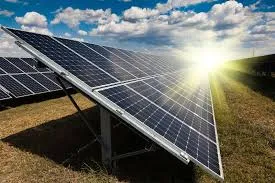bifacial solar system
The Rise of Bifacial Solar Systems A Sustainable Energy Solution
As the world seeks sustainable energy solutions to combat climate change and reduce dependency on fossil fuels, solar power continues to emerge as one of the most promising alternatives. Among the innovations in the solar energy sector, bifacial solar systems are gaining significant attention for their efficiency and unique benefits. These systems represent a paradigm shift in solar technology, harnessing sunlight from both sides of a photovoltaic (PV) panel, thus maximizing energy production.
Understanding Bifacial Solar Technology
Bifacial solar panels are designed with solar cells on both the front and back sides. Unlike traditional solar panels, which capture sunlight only from one side, bifacial panels utilize a dual-sided approach, allowing them to absorb direct sunlight from the front and reflected sunlight from the ground or nearby surfaces on the rear. This innovative design can increase overall energy yields by up to 30% or more, depending on the installation conditions.
The underlying principle of bifacial technology is relatively straightforward. When sunlight strikes the ground, especially if the surface is light-colored or reflective, a portion of that light bounces back toward the rear of the solar panel. In installations where the ground is highly reflective—such as snow-covered areas or sandy desert landscapes—bifacial panels can significantly enhance energy absorption. Consequently, these systems are particularly effective in locations with high albedo (reflectivity) factors.
Advantages of Bifacial Solar Systems
One of the main advantages of bifacial solar systems is their increased energy efficiency. By utilizing reflected sunlight, these systems can generate more power without requiring a proportional increase in space or resource investment. This makes bifacial panels particularly suited for large-scale solar farms, where land use efficiency is critical.
Additionally, bifacial panels often have a longer lifespan due to their robust construction and the fact that they face less degradation from environmental factors. When installed correctly, they can operate effectively for 30 years or more, providing long-term energy solutions and cost savings for operators.
bifacial solar system

Another major benefit lies in their aesthetic appeal. Unlike traditional solar panels that often disrupt the visual landscape, bifacial systems can be integrated more seamlessly into various environments. For instance, they can be used as part of innovative architectural designs, such as building-integrated photovoltaics (BIPV), which adds functionality without compromising aesthetics.
Economic Considerations
From an economic perspective, bifacial solar systems can yield significant returns on investment. Although they may have a higher upfront cost compared to traditional panels, the increased energy production capabilities often lead to lower levelized cost of electricity (LCOE) over the system's lifecycle. Incentives and rebates offered by governments aiming to promote renewable energy can further enhance the economic viability of these systems.
Financial institutions and investors are increasingly recognizing the value of bifacial technology, which is driving innovation and reducing capital costs associated with development and installation. As demand continues to grow, advancements in manufacturing processes and materials are expected to make bifacial solar panels even more accessible.
The Future of Bifacial Solar Systems
The future of bifacial solar systems looks promising. As the global shift towards renewable energy accelerates, the demand for efficient and cost-effective solar solutions is set to rise. With technological advancements and increasing awareness of the benefits, bifacial solar systems are likely to become a standard in large-scale solar projects and home installations alike.
Moreover, ongoing research and development efforts aim to improve the performance and adaptability of bifacial panels in various climates and settings. Innovations such as tracking systems and enhanced mounting structures can further optimize their energy production capabilities.
In conclusion, bifacial solar systems represent a significant leap in solar technology, offering numerous benefits that align with the world’s push for sustainability. As these systems become more widely adopted, they will play a crucial role in achieving a cleaner, greener future while meeting the growing global energy demands.
-
Understanding the Advantages of Solar String Inverters for Your Energy SystemNewsApr.29,2025
-
Choosing the Right PV Inverter: A Comprehensive GuideNewsApr.29,2025
-
The Future of Solar Power: Exploring Bifacial Solar PanelsNewsApr.29,2025
-
The Complete Guide to Solar Panels: Efficiency, Cost, And InstallationNewsApr.29,2025
-
The Best Options for Efficiency and Cost-EffectivenessNewsApr.29,2025
-
Harnessing the Power of Off-Grid Solar Inverters for Energy IndependenceNewsApr.29,2025







